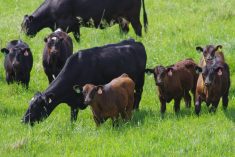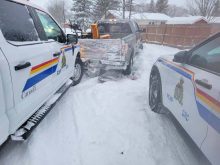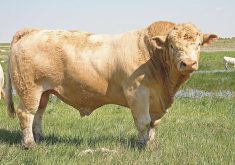Living on the Prairies means living with the threat of an out-of-control grass fire. This year, that potential was so great, the Alberta government declared the start of the wildfire season on March 1, a full month earlier than usual.
“It started earlier this year because we had such a warm and dry winter,” said Whitney Exton, wildfire information officer for the Alberta government. “We received about half the amount of snow this year than we usually do. Until the grass and the trees green up, the wildfire hazard will actually remain a little higher.”
Read Also

Grazing ‘sweet spot’ boosts pasture performance
Timing-focused approach to pasture management touted to boost forage growth, livestock gains while also cutting farmer labour and inputs
The province employs firefighters who are stationed in the forest-protection areas of Alberta, and they are placed strategically. “We have fire managers who are continuing to monitor the weather and the wildfire conditions across Alberta and we’re also positioning our firefighters across Alberta so they can respond very quickly to any wildfires that start,” Exton said.
Additionally, towns, villages, RMs, First Nations, Hutterite colonies and national and provincial parks also have their own fire departments. “We will help to support firefighters in rural municipalities and then there are provincial and national parks and they have their own rules and regulations, but we will support any part of the province that needs help,” said Exton.
Fire departments help one another and such was the case during an intense early-January grass fire that consumed three homes near Nanton. Another fire near Fort MacLeod raged in the strong winds and dry weather and 80 firefighters joined forces to prevent further tragedy. “We have seen winter fires before. It’s not that common though, and that speaks to how warm and how dry the winter was,” said Exton.
Early alert
Neighbours depend on one another for an early alert system. When people see smoke in the distance, they immediately investigate to uncover the source. This is critical because rural populations are sparse, and many homes are tucked away in valleys and coulees that offer protection from the elements. However, that sought-after wind shelter can prevent residents from seeing smoke as it rises into the air. Off-farm employment, meaning empty homes during the day, also increases the risk of a grass fire raging undetected.
Though unpredictable and frightening, people can take steps to guard their property in the event of such a fire.
“A lot of people are already starting to fire-smart their home and properties without even knowing it. Even cleaning off the debris from your lawn and making your house number visible to the road, those are all fire-smart tips,” said Exton.
In order for a fire to start or for it to continue, it requires heat, oxygen and fuel. As all producers have learned the hard way over the years, the weather and temperature cannot be controlled any more than oxygen could be removed from an area.
Property owners can however, exert some control over fuel sources. “Certainly keeping your lawn clean, keeping your eavestroughs clean and trimming the bottom two metres of your trees, and even if you can thin branches or thin out the tops of your trees too, that can definitely help to reduce the threat of wildfire to your home,” Exton said.
Grass fires are often thought of as fast but less-intense fires that can cover a lot of ground without causing a lot of damage, but such is not the case.
“There really is no typical wildfire. It really depends on surrounding circumstances so things like the temperature, humidity — wind speed is a big factor as well. That’s why fire-smarting a home can be so important,” explained Exton.
A number of measures can help reduce the risk of a grass fire becoming well involved in a yard. Stacks of unused wood and other debris should be removed from the vicinity of the home. Brush and trees should be trimmed, and any dead trees removed. Grass should be kept short in the yard, and firewood piles should be a good distance away from the home.
Other safety steps can be found at www.srd.alberta.ca/Wildfire/FireSmart/Default.asp














